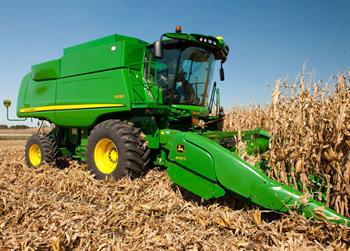 FMH Executive Vice President & Chief Marketing Officer, Don Preusser, discusses the benefits and latest trends in precision farming and crop insurance in a recent article featured by AgriBank.
FMH Executive Vice President & Chief Marketing Officer, Don Preusser, discusses the benefits and latest trends in precision farming and crop insurance in a recent article featured by AgriBank.
When crop insurance and precision farming technology are combined, improved risk management solutions will soon follow.
Precision farming technology has been steadily growing for years and has provided significant gains in producer productivity and efficiency. Roughly six in ten production farmers are expected to adopt various precision technology solutions by 2018. From auto steer to variable rate applications, farmers have an abundance of new capabilities available to improve production farming.
More recently, precision farming technology has been used by some farmers to simplify - and make more accurate - their crop planting and production information for required government reporting as a participant in the federal crop insurance program. Using the equipment GPS monitor and farm management software, producers are able to collect and report both planted and production acres without traditional paper records like planting logs and scale tickets. In short, by leveraging their precision farming technology capabilities, farmers are able to “digitize” their planting and production records, making it more accurate and easier to report and manage critical planting and production information.
The creation of digitized farm data can also provide much greater insight into farming practices, including the ability to better understand crop production risk, particularly when combined with related data like weather, soil conditions, topography and more. When greater insight and understanding of crop production risk is developed, insurers are better able to not only offer more risk management solutions, but more accurately underwrite and price the risk.
While crop insurance is significantly different than many other lines of insurance, it does share some fundamental principles similar to home and auto insurance. For example, auto insurance today is underwritten and priced significantly different than it was 10 years ago because of the use of telematics/GPS information obtained from the automobile. Auto insurers are able to more precisely underwrite and price auto insurance risk because telematics/GPS data generated from the automobile create better understanding of driver risk (i.e. speed, braking, etc.). Data generated from the automobile, combined with other traditional driver risk data, result in improved predictions of potential risk of an accident. In a similar fashion, precision farming technology can provide insurers with more precise and greater information about planting and production activity (i.e. seed spacing, etc.) that can improve the prediction of potential crop performance beyond what weather alone might cause.
 So how might precision technology and crop insurance solutions look in the future? Some solutions already exist. For example, Farmers Mutual Hail Insurance provides a discount on a crop hail insurance policy when a customer uses a combine head that integrates GPS technology from the combine. The GPS-enabled combine head is able to more effectively “pick-up” downed corn from a windstorm as the combine is more precisely guided along the row line obscured by flat corn stalks. Because less production loss is expected when using the GPS-guided head, insurance risk is less and a lower insurance premium can be applied.
So how might precision technology and crop insurance solutions look in the future? Some solutions already exist. For example, Farmers Mutual Hail Insurance provides a discount on a crop hail insurance policy when a customer uses a combine head that integrates GPS technology from the combine. The GPS-enabled combine head is able to more effectively “pick-up” downed corn from a windstorm as the combine is more precisely guided along the row line obscured by flat corn stalks. Because less production loss is expected when using the GPS-guided head, insurance risk is less and a lower insurance premium can be applied.
Significant potential exists to leverage farmers’ use of precision farming technology to improve agricultural risk management, including crop insurance. Using precision farming technology to collect and organize field data can lead to greater insight into crop production risk. Working within a clearly defined environment where the farmer controls and owns their data, trusted advisors can help farmers to identify and obtain new solutions, including improved risk management tools that more accurately reflect individual farmer risk and the solutions desired to protect against the risk of loss.


